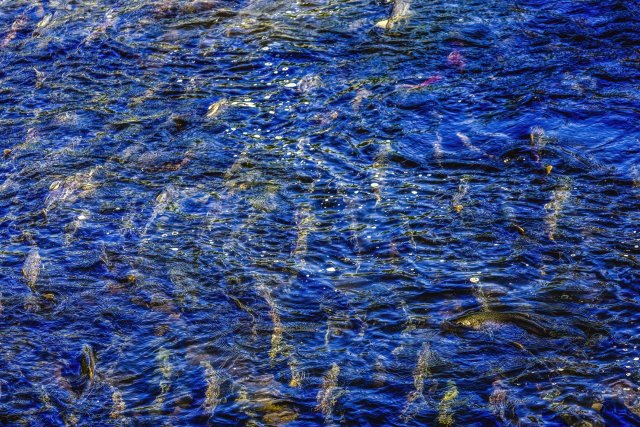TSC Science Priorities

This page provides descriptions of science priorities identified by the Tribal Science Council (TSC) and provides related information on EPA activities to address these issues and resources.
Climate Change
Understanding and addressing climate change is critical to EPA's mission of protecting human health and the environment. Climate change affects almost everything in our environment and communities, including Tribal communities who are disproportionately impacted by its effects. These impacts may be through environmental changes that affect traditional lifeways or threats to the health of Tribal environments and communities. For example, some Tribal elders and communities still gather their food according to the traditional knowledge with respect to seasons. Climate change may adversely impact the health of these communities and alter their traditional way of life by shortening and/or eliminating growing seasons for native plants and damaging habitats. Other threats could be the spread of invasive plants or reductions in native fish populations that Tribes may depend on as a critical food source.
EPA conducts research to improve our understanding of how climate change impacts human health and the environment. Learn more about EPA’s Climate Change Research.
Emerging Contaminants
EPA and Tribes are engaging to better understand and address threats posed from emerging contaminants that threaten the environment and ways of life. Contaminants of emerging concern (CEC) are chemicals that have not previously been detected in water, or that are being detected at significantly different levels than expected. One of these contaminants is 6PPD. Used for more than six decades in tires, 6PPD is also found in other rubber products such as footwear, synthetic turf infill, and synthetic playground surfaces. 6PPD reacts with ozone in the air to form 6PPD-quinone, which EPA-funded research found to be linked to the deaths of coho salmon in urban Puget Sound streams. Exposures occur when runoff containing the chemical is washed from parking lots and streets into streams and other bodies of water.
Achieving clean water that protects aquatic life and supports commercial, recreational, and cultural fishing practices takes partnership at all levels of government. EPA’s research investigates analytical methods, occurrence, health effects, and treatment assessments to aid regulatory decision making to ensure that these CECs are at safe levels in drinking water as well as wastewater and reused water. Learn more about EPA’s Contaminants of Emerging Concern research.
- Visit EPA’s 6PPD-quinone webpage which includes key EPA actions to address 6PPD-quinone.
Indigenous Knowledges (IK)
Indigenous Knowledges (IK) are the accumulated knowledge American Indians and Native Alaskans have about their environment. In 2022, the Office of Science and Technology Policy released Guidance for Federal Departments and Agencies on Indigenous Knowledge. The guidance recognizes IK as one of the many important bodies of knowledge that contributes to the scientific, technical, social, and economic advancements of the United States, and to our collective understanding of the natural world. EPA is committed to gaining awareness and understanding of IK, often referred to as Traditional Ecological Knowledge (TEK), and considering the inclusion and application of IK in federal research, policies and decision making.
- Tribal Science Priority – TEK (PDF) (2 pp, 136 K)
- Read the Office of Science and Technology Policy's Guidance for Federal Departments and Agencies on Indigenous Knowledge
- View the National Park Service webpage on Tribal Research Policies, Processes and Protocols
- Considering Traditional Ecological Knowledge (TEK) During the Cleanup Process
PFAS
Per- and polyfluoroalkyl substances (PFAS), also known as ‘forever chemicals,’ are prevalent and persistent in the environment. PFAS are a category of chemicals used since the 1940s to repel oil and water and resist heat, which makes them useful in everyday products. Some PFAS do not easily degrade and can bioaccumulate – or build up – in the environment and the human body over time resulting in potential adverse health impacts. Given their persistence and potential health impacts, it is important to understand how PFAS may impact our food system and people living in agricultural areas so we can develop strategies to reduce and prevent these exposures. Given these issues, PFAS pose a risk to Tribal lifeways, resources, and traditional foods.
EPA researchers are developing methods to detect and measure PFAS in the environment. Researchers are also identifying PFAS sources and occurrence in the outdoor and indoor environment, characterizing how PFAS moves through the environment, and identifying the relative importance of ways we might be exposed to PFAS and how we can reduce PFAS exposure. Learn more about EPA’s PFAS Research.
- EPA awarded over $15 million in grant funding to ten institutions for research to reduce PFAS exposure from food and understand the uptake of PFAS in food and animals. One of the grantees is the Passamaquoddy Tribe, who are investigating PFAS Accumulation in Finfish and Shellfish Species within the Coastal and Inland Waters of the Peskotomuhkati (Passamaquoddy) Homelands. Learn more about these research grants.
